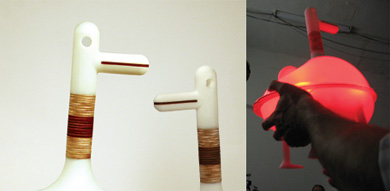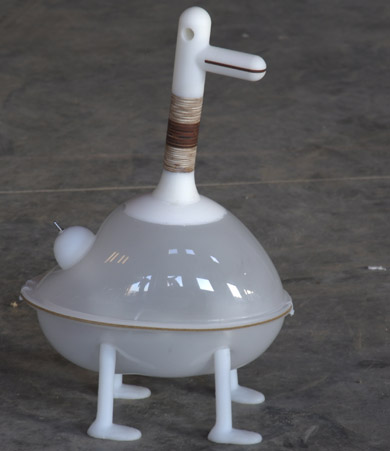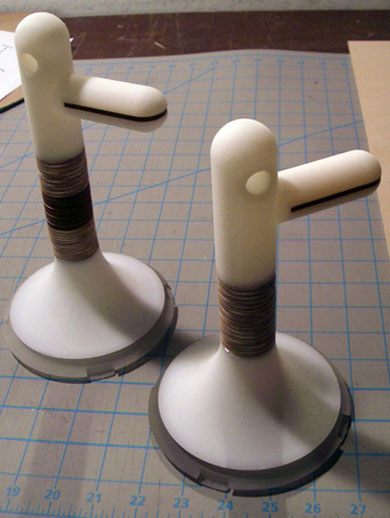geeseNecks – 1.5

geeseNecks represent a living language using gesture from the body in a physical space. The visualization takes the form of luminosity. A group of self-aware objects communicate a physical presence between each other, referencing a visual understanding of the boundaries of proximity inherent in wireless communication.
There are two illuminated networked geeseNecks, emitting a red and blue glow. Computationally, the geeseNecks are aware of their altitude and translate this data into varying degrees of luminosity. When the object is picked up from the ground, it fluctuates in its brightness. Ground and overhead levels are dim while waist level (about 30 inches) is at maximum brightness.

This image represents a 30 second time of the geeseNecks in motions.
Along with altitude awareness, the geeseNecks are also aware of their proximity to one another. The geeseNecks seek each other. When in range, the geeseNecks assume the other's color luminosity while maintaining its own, resulting in shades of purple.
If you listen closely, the geeseNecks emit a quiet chirp. Similar to their light behavior, the geeseNecks affect each other's pitch.
The geeseNecks encourage novel forms of social group play, inviting individuals into its networked-based ecosystem.

Technology and Materials Used:
Two microprocessors, two ultra sonic range finders, two Bluetooth modules, 32 red and blue LEDs, blow formed plexiglass, silicone, FDM (Fused Deposition Modeling) plastic, birch plywood and cable ties.
Video:
geeseNeck_1.0 prototype.mov
Making the first prototypes
geeseNecks are transitional species. They have evolved out of 'Light Language (evolution of sheep)'

geeseNeck 1.0

FDM necks

Solid Works was used to complete the final rendering before sending it to print.

geeseNecks being prototyped out of FDM on the 3d printer, the brown is the support material.

parts for final
assembly.

All materials contained therein are © copyright 2005-2006, Jed Berk.